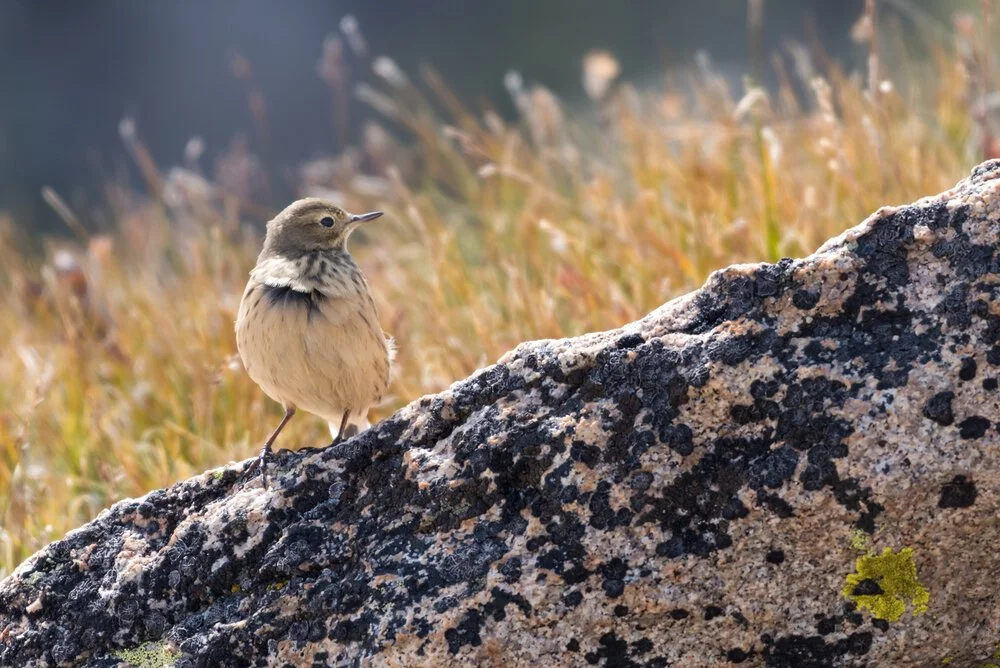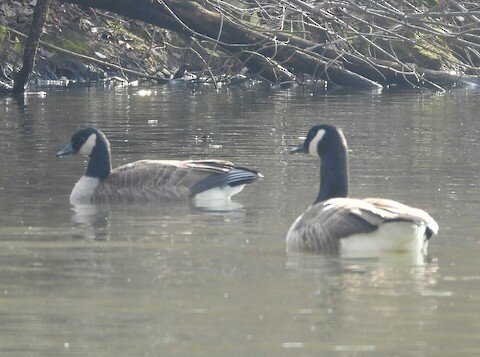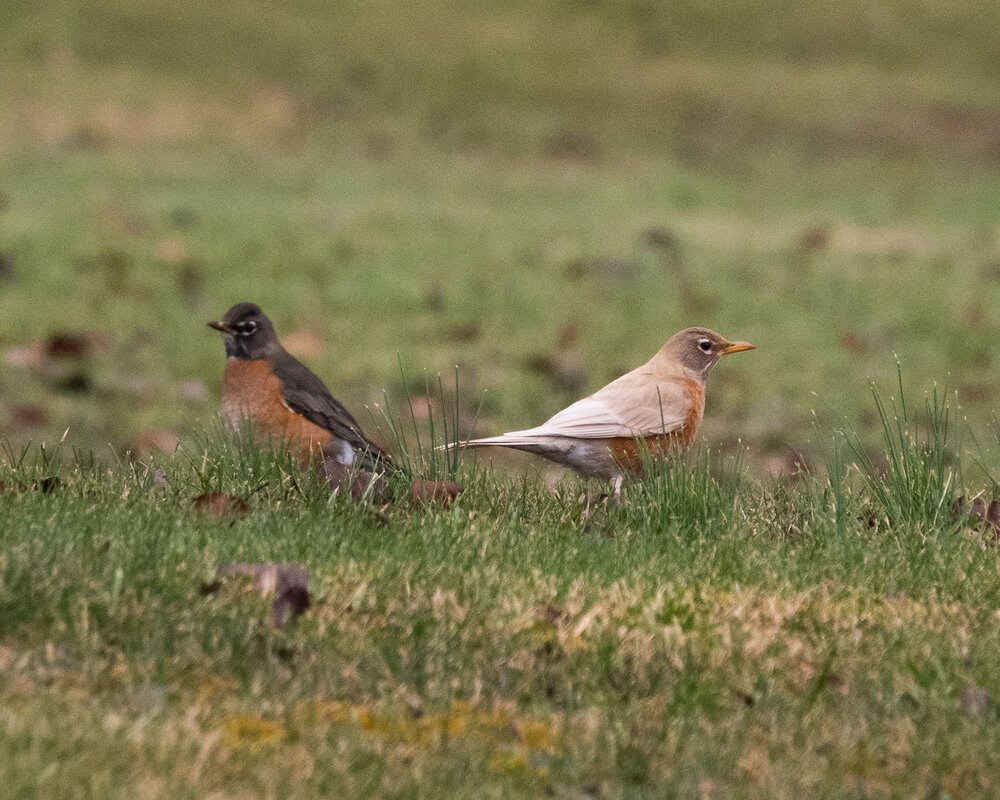Photo: American Pipit, Ellen Nelson/Audubon Photography Awards
Written by Phil Silas
The 39th Annual Manassas-Bull Run Christmas Bird Count on December 20, 2020 was conducted following special Covid-19 protocols. The participant count was 93 as carpools were limited to family groups and no new volunteers were solicited. We managed to have a safe count that tallied over 22,500 birds of 87 species. We had to forego our traditional lunch in Ellanor C. Lawrence Park due to the pandemic. The birding conditions were favorable and the overall species count was only 2 short of our all-time high of 89 set in 2014.
American Pipit, Ellen Nelson/Audubon Photography Awards
Cackling Goose and Canada Goose, Tim Resch
The American Pipit has only been seen on 20% of our counts, and never more than 16 birds, that is until this count. We observed pipet flocks on multiple routes for a new high count of 620 birds! A late Blue-headed Vireo was found and photographed by Matt Bender. It is only the 2nd one seen on the count and the 1st was back in 2002. A Cackling Goose was seen and photographed with Canada Geese by Tim Resch. It is also only the 2nd observation, and the other one was in 2013.
Blue-headed Vireo, Matt Bender
Other highlights included all-time highs of Carolina Wrens at 466, and White-throated Sparrows at 1,472. Merlins tied the all-time high of 3 previous years with 3. Common Ravens at 11 is just 3 off last year’s all-time high and the trend since 2015 is that they are indeed getting more common. Eastern Bluebirds had their highest count (387) since 2015. Canada Geese (4,563), Yellow-bellied Sapsuckers (50), Northern Cardinals (499) and Song Sparrows (491) all were very close to all-time highs.
There were several species where just 1 bird was observed including: American Woodcock, Great Horned Owl, Eastern Phoebe, Brown Thrasher, American Tree Sparrow, Rusty Blackbird and Pine Warbler. Due to food scarcity further north, there is an irruption of several species moving further south this winter. These include the following that are only observed on about half of our counts, and this year we observed: Red-breasted Nuthatches (21); Pine Siskins (12); and Purple Finches (9).
Another interesting observation was a leucistic American Robin by Dixie Sommers. Her photo shows how variable this loss of pigment can be; sometimes birds will have white splotchy feathering but this bird showed an overall lighter tone. Other notable points about the count were the absence of the Common Grackle, and the observation of a Horned Lark during Count Week.
American Robin and Leucistic Robin, Dixie Sommers
The full results for the 2020 CBC are available here. Thanks to all who supported this event in these unusual circumstances. We look forward to a safe and more traditional event December 19, 2021!





